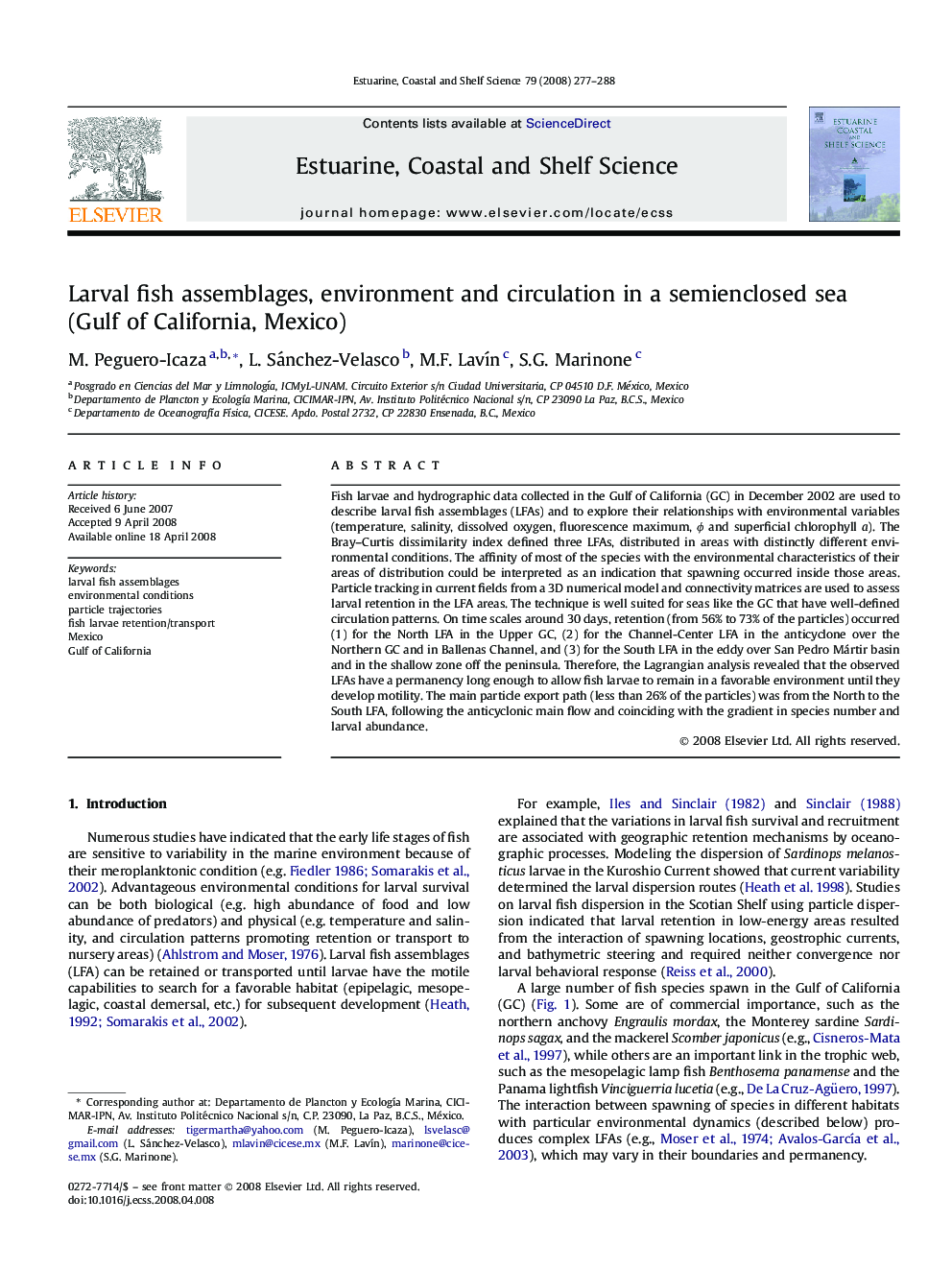| Article ID | Journal | Published Year | Pages | File Type |
|---|---|---|---|---|
| 4541829 | Estuarine, Coastal and Shelf Science | 2008 | 12 Pages |
Fish larvae and hydrographic data collected in the Gulf of California (GC) in December 2002 are used to describe larval fish assemblages (LFAs) and to explore their relationships with environmental variables (temperature, salinity, dissolved oxygen, fluorescence maximum, ϕϕ and superficial chlorophyll a). The Bray–Curtis dissimilarity index defined three LFAs, distributed in areas with distinctly different environmental conditions. The affinity of most of the species with the environmental characteristics of their areas of distribution could be interpreted as an indication that spawning occurred inside those areas. Particle tracking in current fields from a 3D numerical model and connectivity matrices are used to assess larval retention in the LFA areas. The technique is well suited for seas like the GC that have well-defined circulation patterns. On time scales around 30 days, retention (from 56% to 73% of the particles) occurred (1) for the North LFA in the Upper GC, (2) for the Channel-Center LFA in the anticyclone over the Northern GC and in Ballenas Channel, and (3) for the South LFA in the eddy over San Pedro Mártir basin and in the shallow zone off the peninsula. Therefore, the Lagrangian analysis revealed that the observed LFAs have a permanency long enough to allow fish larvae to remain in a favorable environment until they develop motility. The main particle export path (less than 26% of the particles) was from the North to the South LFA, following the anticyclonic main flow and coinciding with the gradient in species number and larval abundance.
